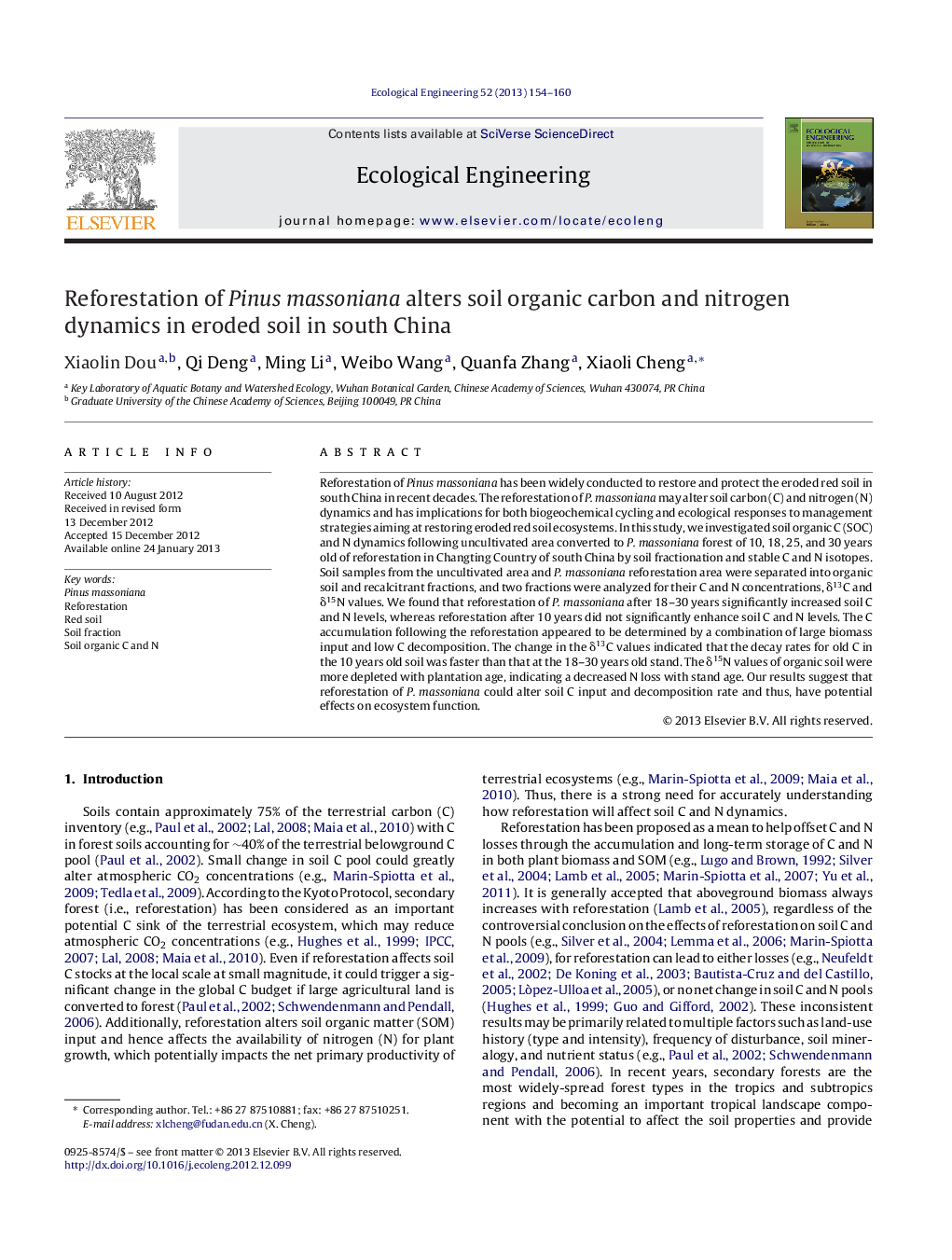| Article ID | Journal | Published Year | Pages | File Type |
|---|---|---|---|---|
| 4389748 | Ecological Engineering | 2013 | 7 Pages |
Reforestation of Pinus massoniana has been widely conducted to restore and protect the eroded red soil in south China in recent decades. The reforestation of P. massoniana may alter soil carbon (C) and nitrogen (N) dynamics and has implications for both biogeochemical cycling and ecological responses to management strategies aiming at restoring eroded red soil ecosystems. In this study, we investigated soil organic C (SOC) and N dynamics following uncultivated area converted to P. massoniana forest of 10, 18, 25, and 30 years old of reforestation in Changting Country of south China by soil fractionation and stable C and N isotopes. Soil samples from the uncultivated area and P. massoniana reforestation area were separated into organic soil and recalcitrant fractions, and two fractions were analyzed for their C and N concentrations, δ13C and δ15N values. We found that reforestation of P. massoniana after 18–30 years significantly increased soil C and N levels, whereas reforestation after 10 years did not significantly enhance soil C and N levels. The C accumulation following the reforestation appeared to be determined by a combination of large biomass input and low C decomposition. The change in the δ13C values indicated that the decay rates for old C in the 10 years old soil was faster than that at the 18–30 years old stand. The δ15N values of organic soil were more depleted with plantation age, indicating a decreased N loss with stand age. Our results suggest that reforestation of P. massoniana could alter soil C input and decomposition rate and thus, have potential effects on ecosystem function.
